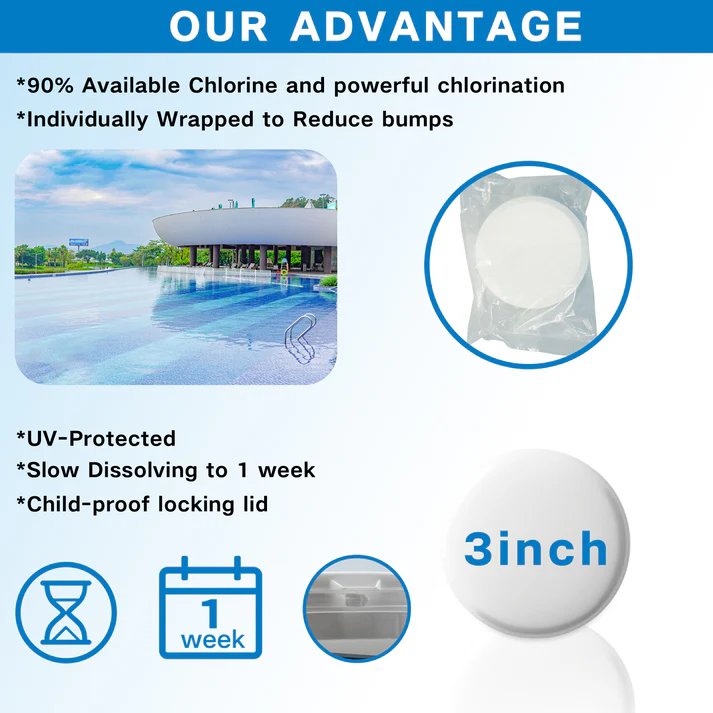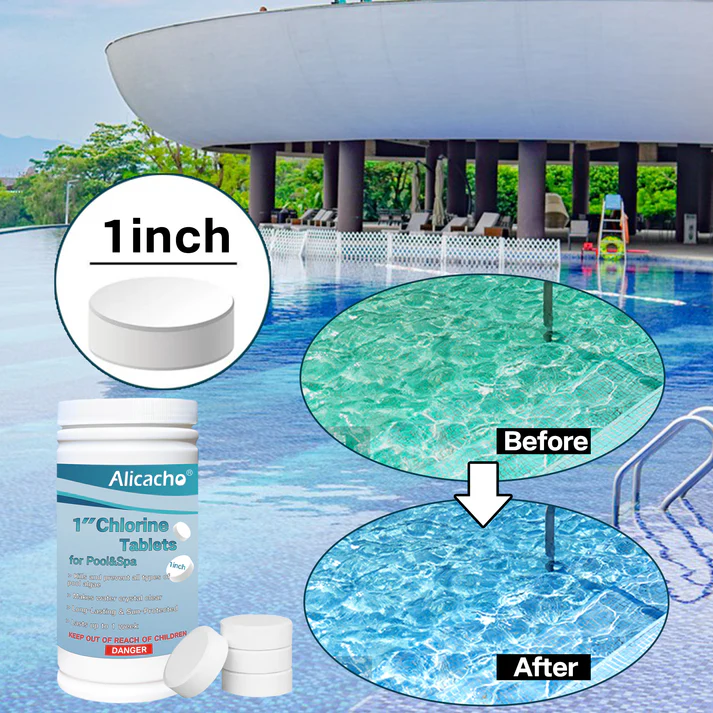How to Break Chlorine Lock in Your Pool: A Complete Guide
Introduction
A chlorine lock is a frustrating problem that can render your pool water unsafe and cloudy, even when you add chlorine regularly. Understanding how to break chlorine lock is essential for maintaining a healthy swimming environment. At ChloroTabs, we specialize in pool maintenance solutions, and this guide will walk you through the causes, symptoms, and step-by-step fixes for chlorine lock. By the end, you’ll know how to restore your pool’s balance efficiently and prevent future issues.
What Is Chlorine Lock?
Chlorine lock occurs when the chlorine in your pool becomes chemically “locked” and ineffective at sanitizing the water. This happens due to high levels of cyanuric acid (a stabilizer) or imbalanced pH and alkalinity. Instead of actively killing bacteria and algae, the chlorine remains bound, leading to poor water quality.
Low-Competition Keywords: chlorine lock causes, what causes chlorine lock in pools
Symptoms of Chlorine Lock
- Persistent Cloudy Water: Despite adding chlorine, the water remains hazy.
- Low Free Chlorine Levels: Test kits show minimal free chlorine, even after shocking.
- Algae Growth: Algae blooms reappear quickly.
- Strong Chemical Odor: A “chlorine smell” often signals chloramines (bound chlorine).
Low-Competition Keywords: chlorine lock symptoms, how to detect chlorine lock
Causes of Chlorine Lock
- Excess Cyanuric Acid (CYA): Over-stabilization (>100 ppm) binds chlorine.
- High pH or Alkalinity: Imbalanced water chemistry reduces chlorine efficacy.
- Organic Contamination: Heavy debris or swimmer waste depletes free chlorine.
Internal Link: Learn more about chlorine lock and its causes on our website.
How to Break Chlorine Lock: Step-by-Step Solutions
Step 1: Test Your Water
Use a reliable test kit to measure:
- Free chlorine
- Total chlorine
- Cyanuric acid (CYA)
- pH and alkalinity
Pro Tip: ChloroTabs’ testing kits provide accurate readings to diagnose chlorine lock quickly.
Low-Competition Keyword: how to test for chlorine lock
Step 2: Lower Cyanuric Acid Levels
If CYA exceeds 100 ppm:
- Drain and replace 30-50% of pool water.
- Use a cyanuric acid reducer (available at ChloroTabs’ store).
Step 3: Adjust pH and Alkalinity
- Lower pH to 7.2–7.6 using muriatic acid.
- Maintain alkalinity between 80–120 ppm.
Step 4: Shock the Pool
Use a non-stabilized shock (e.g., calcium hypochlorite) to break chloramines:
- Add 2–3 pounds per 10,000 gallons at dusk.
- Run the pump for 24 hours.
Step 5: Use a Chlorine Neutralizer (If Needed)
For severe cases, add sodium thiosulfate to reset chlorine levels, then rebalance.
Low-Competition Keywords: how to fix chlorine lock with shock, chlorine neutralizer for pools
Internal Link: For quality pool shock products, visit ChloroTabs.
Preventing Chlorine Lock
- Monitor Stabilizer Levels: Keep CYA at 30–50 ppm for outdoor pools.
- Regular Testing: Check pH and chlorine weekly.
- Use Stabilized Chlorine Sparingly: Opt for ChloroTabs’ slow-dissolve tablets to avoid over-stabilization.
Brand Mention: ChloroTabs’ stabilized chlorine tablets are designed to prevent lock while maintaining sanitation.
FAQs About Chlorine Lock
Q: Can high chlorine cause a lock?
A: No—chlorine lock stems from chemical imbalance, not high chlorine.
Q: How long does it take to fix chlorine lock?
A: Typically 24–48 hours after shocking and rebalancing.
Low-Competition Keyword: how long to fix chlorine lock
Conclusion
Breaking chlorine lock requires a systematic approach: testing, adjusting stabilizer levels, shocking, and preventive maintenance. By using ChloroTabs’ trusted products and following this guide, you can restore your pool’s clarity and safety. For more expert tips, explore our resource hub.



